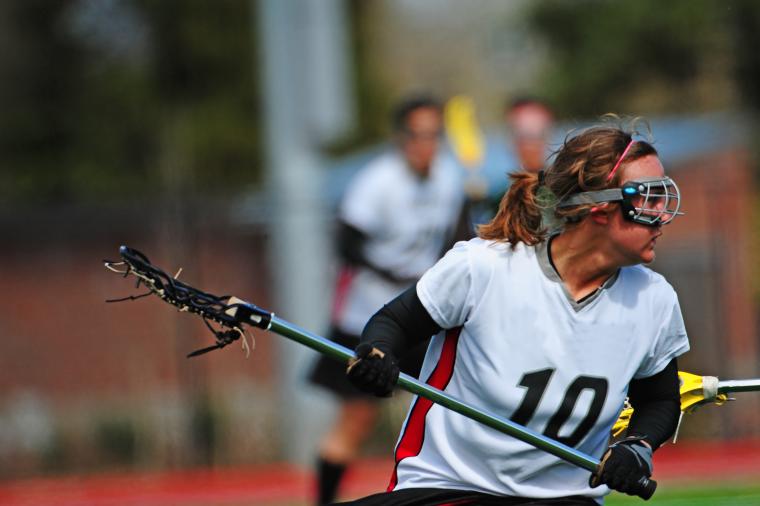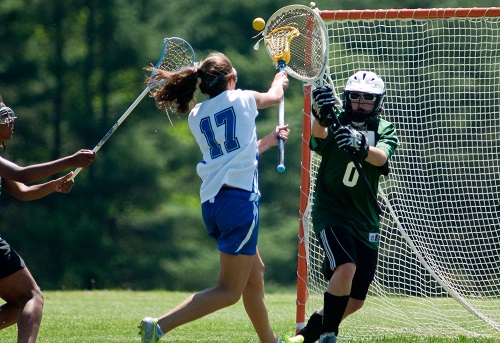

Those who were holding their breath about whether the new girls’ high school lacrosse rules would include head protection can exhale now. It may be a sigh of relief or a hiss of frustration; the recently released rules don’t mandate helmets – although they do allow for some other personal choices on the part of the player.
The National Federation of State High School Associations (NFHS) announced its full rule changes late last week. Rules addressed various types of protective wear, as well as headgear, in addition to changes in the actual rules of play.
Back in June, the NFHS had announced it would be taking a greater role in the rules-writing process with USA Lacrosse, which led to speculation that helmets – or at least head coverings – would be mandated.
Not so, according to the new rules; in fact, the new rules maintain the requirement for approval of protective head coverings worn for medical reasons. And while face masks that are soft and non-abrasive are allowed to be worn for health and/or religious reasons, protective molded face masks are not permitted. (Goalies, under the new rules, are allowed to wear a clear, molded, and rigid helmet eye shield in combination with tinted or clear eyeglasses).
NFHS also noted that the new rules remove the requirement of shin protection for the goalkeeper while maintaining the option to wear shin protection, in order to create consistency between girls’ and boys’ lacrosse.
Another change to the rules is to allow the wearing of religious and/or cosmetic headwear during competition, as long as it fits securely and is made of non-abrasive or soft materials; this change eliminates the requirement for prior authorization from the state association – something that had become a sore point in sports when athletes were disqualified, not allowed to compete, or had games stopped because of religious head garments such as hijabs or yarmulkes.
It's likely the medical community will object to the lack of helmets; after all, it’s hardly a new issue, although it certainly does not stretch all the way back to the Native Americans who originated the game. Most recently, in 2019, it came to the fore when a report produced by researchers in the Department of Orthopedics at the New York University Langone Health showed headgear was effective at lowering the rate of head or facial injury and concussions in women's lacrosse. Additionally, mandated headgear use was also shown to lower the rate of injury to body locations other than the head or face during practice.
But aficionados of the game have long held that the women’s game is significantly different from the men’s, relying more on speed and strategy than aggression; however, there has been a growing school of thought that the game is undergoing a sea change on the women’s side, becoming more aggressive with the migration of coaches from boys’ and men’s lacrosse programs.
In 2015, ASTM created a standard for women’s lacrosse helmets – but those helmets weren’t required, which meant that most manufacturing campaigns never gained traction. A year before that, however, the Florida High School Athletic Association made the groundbreaking decision to mandate helmets in girls’ lacrosse.
In 2017, Brown University became the first NCAA Division I women’s lacrosse program to require helmets for all players. That same spring, female lacrosse players for high schools on Long Island in New York were given the option to wear standardized lacrosse-specific helmets, but most coaches left the decision to actually wear them up to the individual players, according to Newsday.com. A handful of other schools followed suit.
There are already some helmets on the market for girls, including models like this. However, one option for head protection, that could strike the middle ground between those adamantly opposed to head protection and those lobbying for it, might be soft headgear, similar to that required of Florida's high school girls' lacrosse players. In 2015, soccer star Ali Krieger made headlines when she played games wearing a black headband designed to lower the potential for concussions.
As students return to school sports, it’s likely the debate – and the head games – will continue.

